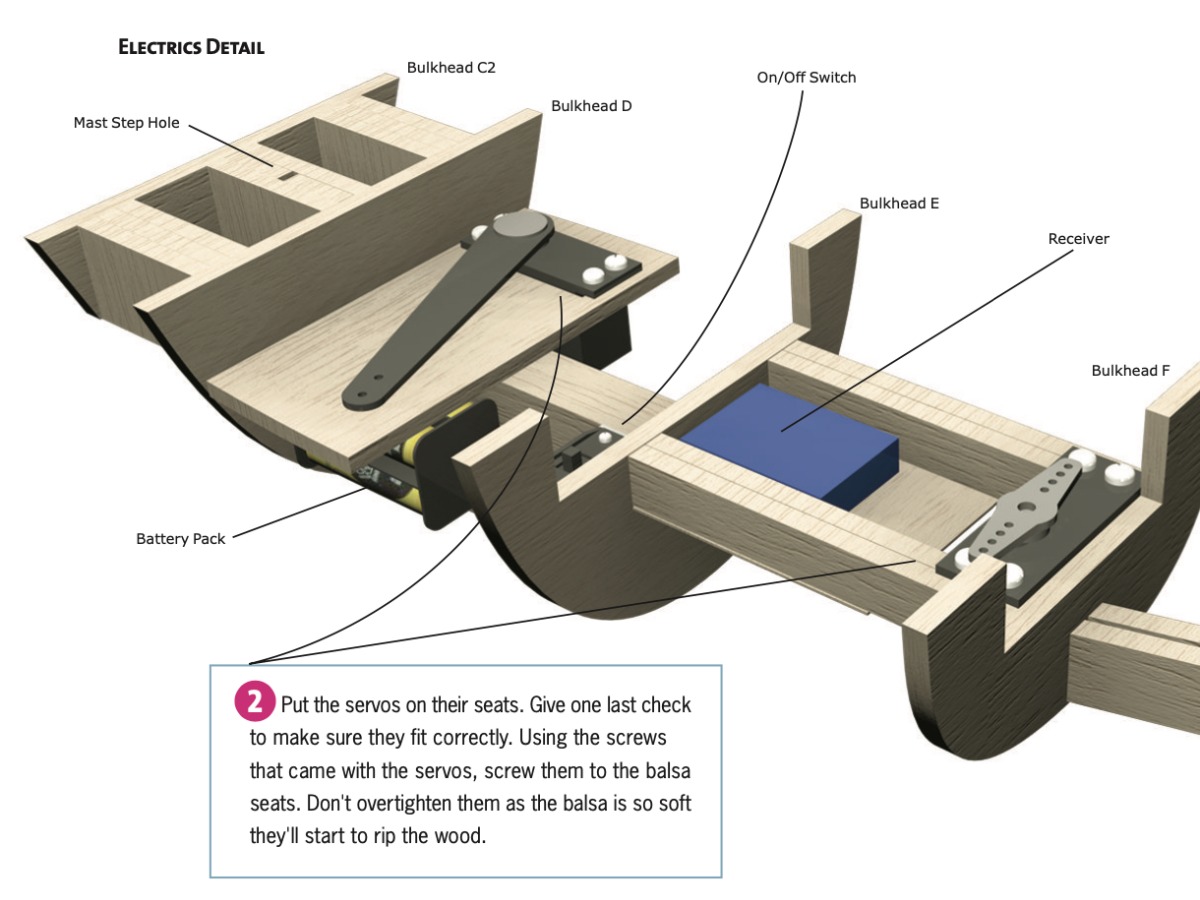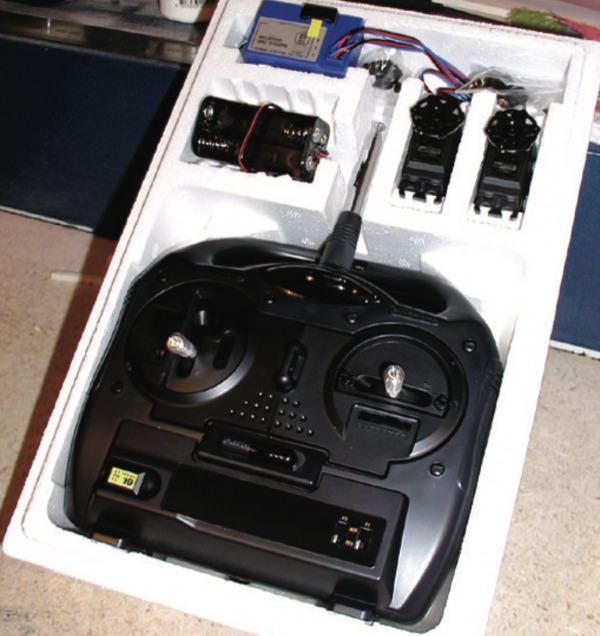Électricité des Yachts Radiocommandés - Pour Débutants
Pour un novice complet, la configuration et l'installation des éléments électriques peuvent sembler assez intimidantes. Il n'est pas facile de comprendre comment tout se branche. Quelles batteries utiliser et où les acheter.
Lorsque le livre RacingSparrow a été publié pour la première fois en 2007, les éléments électriques n'étaient pas aussi sophistiqués, mais les servos et les connecteurs sont restés à peu près les mêmes. Les émetteurs, récepteurs et batteries ont tous évolué avec plus d'options. Tout est devenu moins cher et plus fiable.
Nous décomposons tout cela dans cet article. Des liens vers les composants sont fournis.

Il est important de noter que vous n'avez pas besoin de souder ou de réaliser un câblage personnalisé. Tout repose sur les composants corrects qui se branchent les uns aux autres. La chose la plus technique à bien faire est la tension de la batterie. Pour les servos et récepteurs standards, 4 piles AA rechargeables fournissent la tension correcte de 4,8V. C'est la configuration la plus simple avec le moins de composants et la moins chère au total.
Pour un simple voilier radiocommandé en 2023 comme un RacingSparrow, vous avez besoin d'un émetteur, d'un récepteur, d'un support de batterie 4xAA et de 2 servos (1 pour le bras de voile, 1 pour le gouvernail) qui se branchent au récepteur via des connecteurs JR. Les options étanches et les différentes tailles de servos pour le bras de voile et le gouvernail sont nombreuses. Vous pouvez choisir parmi une gamme d'options d'émetteurs et de servos, allant du simple au haut de gamme.
Les connecteurs les plus courants sont les connecteurs JR. Il existe d'autres connecteurs plus petits et plus grands, mais ceux de type JR s'adapteront à tous les récepteurs et servos.
Vous verrez également les abréviations rx et tx utilisées sur la plupart des sites web. Cela signifie récepteur/émetteur.
 Composants :
Composants :
- Émetteur : Votre unité de contrôle portable. Elle envoie des signaux au récepteur sur le bateau pour contrôler le gouvernail et le bras de voile. Elle a sa propre batterie.
- Récepteur : Reçoit les signaux de l'émetteur et dirige les servos en conséquence.
- Servos : Petits moteurs qui déplacent le gouvernail et le bras de voile en fonction des commandes du récepteur.
- Support de batterie/Batterie : Alimente le récepteur et les servos à l'intérieur du bateau.
Câblage :
Le "câblage" dans un yacht RC fait référence aux connexions entre le récepteur, les servos et la batterie :
- Récepteur aux Servos : Les servos se branchent au récepteur à l'aide de connecteurs JR. En général, le servo de gouvernail va au canal 1 et le servo de bras de voile au canal 2.
- Alimentation : La batterie ou le support de batterie se connecte au récepteur pour alimenter le système. Sur la plupart des récepteurs, il y aura un canal de batterie ou équivalent.
Options de Configuration :
Maintenant, en fonction de votre budget et de vos préférences, voici trois options de configuration :
La Configuration Simple (NZD$70) :
- Émetteur & Récepteur : Une paire basique fera l'affaire pour les débutants.
- Servos x 2 : Un pour le bras de voile et un pour le gouvernail.
- Support de Batterie : Tient des piles AA standard pour alimenter le système.
- Batteries : Piles AA régulières.
La Configuration Intermédiaire (NZD$230) :
- Tous les Composants Étanches : Idéal pour ceux qui prévoient de naviguer dans des conditions difficiles.
- Émetteur : Excellente qualité avec de nombreuses options.
Récepteur : Étanche avec un boîtier solide.
Servo de bras de voile: Étanche et à couple élevé.
Servo de gouvernail: Servo Micro Analogique Étanche avec Engrenages Métalliques. - Batterie Rechargeable : Une source d'alimentation plus durable et fiable par rapport aux piles standard.
La Configuration Sans Limites (NZD$720) :
- Émetteur & Récepteur : Optez pour des modèles haut de gamme avec des fonctionnalités avancées pour un meilleur contrôle et une plus grande portée.
- Servo de treuil de voile : Offre un contrôle précis de la position de la voile, crucial pour la navigation compétitive.
- Servo de gouvernail : Servo de haute qualité pour une direction précise.
- LiFe batterie : Assure un approvisionnement constant en énergie pour des sessions de navigation prolongées.
Chaque configuration ci-dessus offre une expérience de navigation progressivement améliorée, allant de la navigation décontractée à la voile compétitive. Le câblage reste fondamentalement le même dans les trois configurations, mais la qualité et les fonctionnalités des composants s'améliorent à mesure que vous montez dans la gamme de prix.
Si vous avez des difficultés à vous procurer les pièces, essayez notre forum pour des informations à jour.